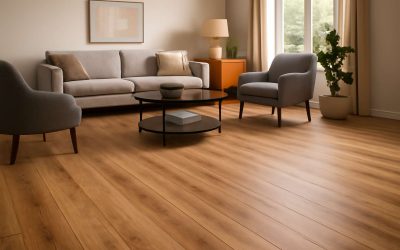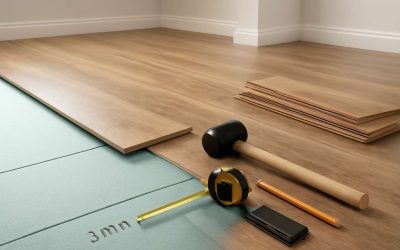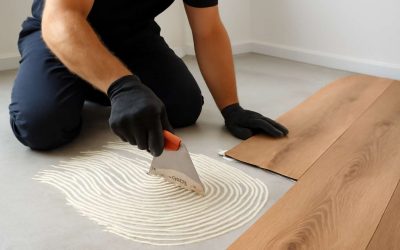
Waterproof laminate flooring is an inexpensive floor solution that can provide the look of hardwood floors while protecting them from moisture. These floors are becoming increasingly popular in kitchens, bathrooms, laundry rooms, and commercial settings, and they come in a variety of colors and styles that suit many tastes.
These floors are usually installed in the same manner as standard laminates, but they use a special surface-sealing installation method that helps keep water out of the planks. This method is called “click-together,” or “floating” flooring, and it’s a fairly easy do-it-yourself project for the average homeowner.
There are two main types of water-resistant flooring: those that swell and expand slowly (a type of “water-resistance”), and those that are completely impervious to liquids (a type of “waterproof”). The definition of each can vary from manufacturer to manufacturer, but it is usually measured in hours before a product will swell or absorb water, with higher quality products offering longer hours.
Generally speaking, though, most laminates swell and expand easily due to their fiberboard cores, so it’s not possible to make them truly waterproof. However, some companies have tried to make them more resistant by altering the formulation of their fiberboards or introducing resins that can help reduce swelling.
The problem is that they don’t always work well in wet areas like kitchens and baths. In fact, they can be ruined if they are left in these locations for long periods of time.
As a result, it’s best to avoid using these types of floors in wet areas, and instead install them in dry locations. It’s also worth remembering that water-resistant floors often have significant limitations, such as not being suitable for putting large items on them (such as refrigerators) or allowing them to soak up too much water for long periods of time.
If you want to install waterproof laminate floors, it’s important to follow the manufacturer’s instructions carefully. This includes making sure the subfloor is properly prepared for this type of flooring and ensuring that the planks are correctly oriented to the subfloor and laying them in place evenly.
While most waterproof laminates are fairly easy to install, you may need to hire an experienced contractor to help with this process. This is especially true if you are installing a new waterproof laminate floor in a high-traffic area, such as a family room.
Laminate is a great floor option for people with pets or children, because it’s easy to clean up any spills or accidents. You can even choose a waterproof floor that’s designed with hygienic features, such as antimicrobial protection, to help keep the bacteria and germs down.
Waterproof laminate floors are one of the most popular flooring options for bathrooms and kitchens, since they help to keep water out and prevent mold from forming. In addition, they are easy to clean and are available in a wide range of colors and styles, so you can find the perfect product for your home.



0 Comments